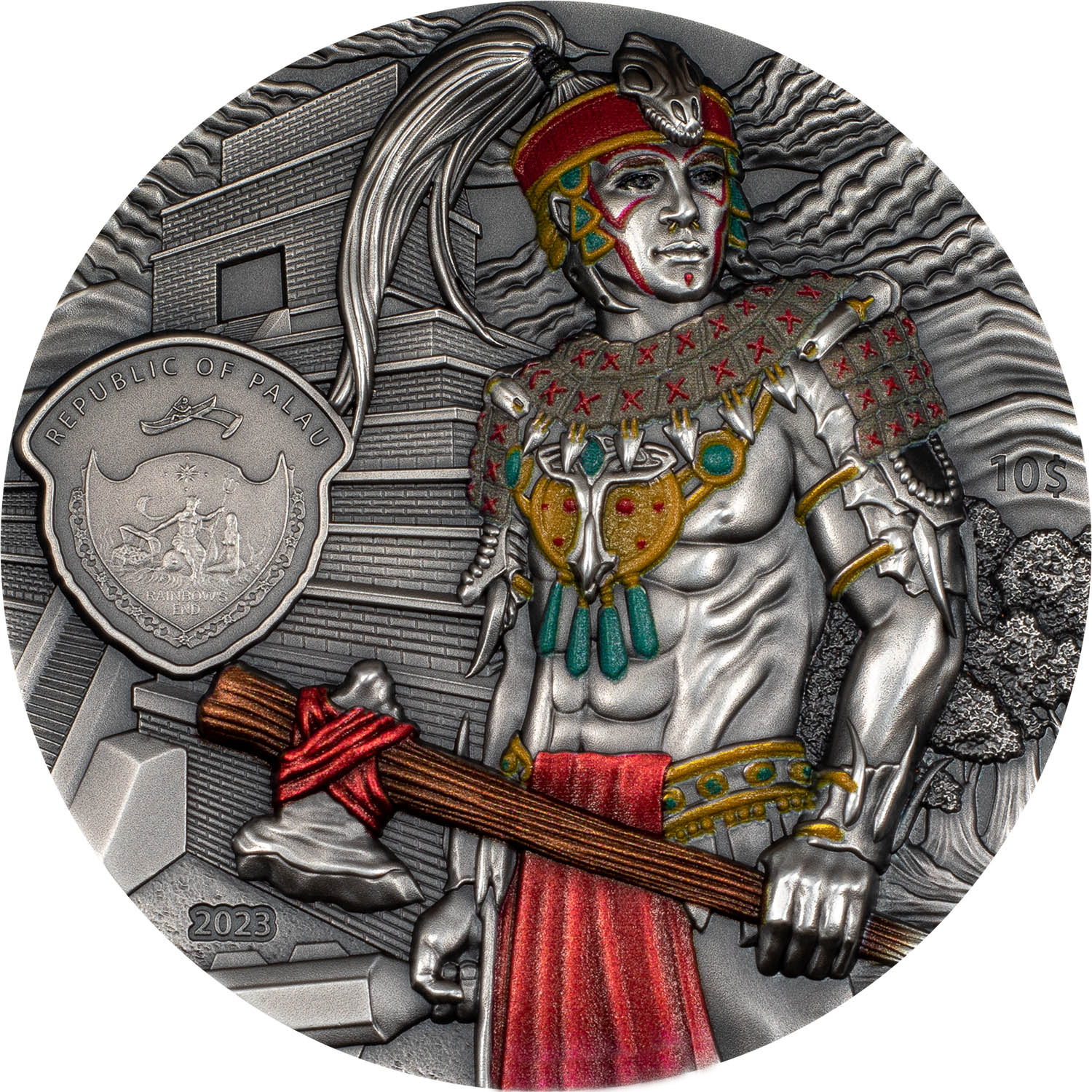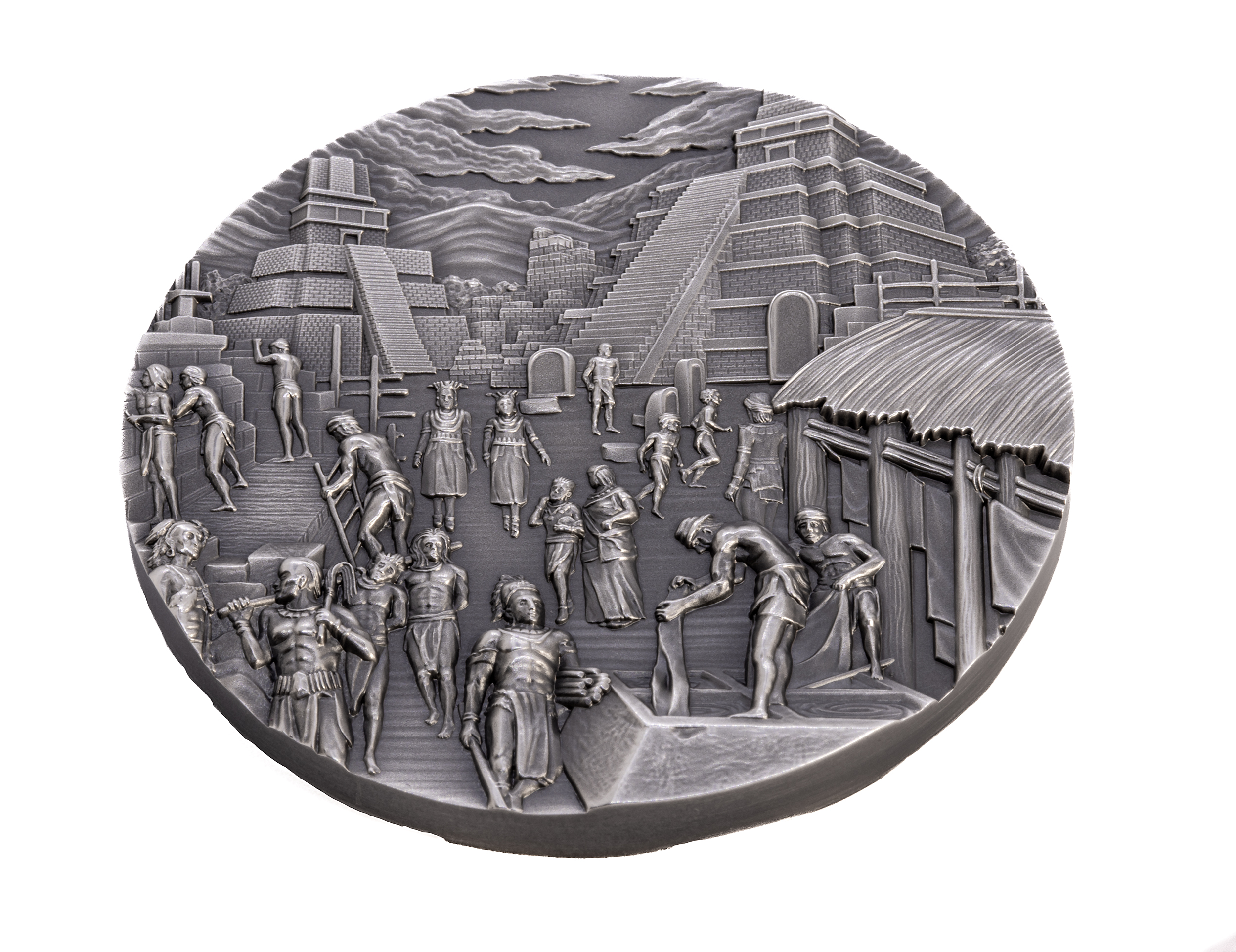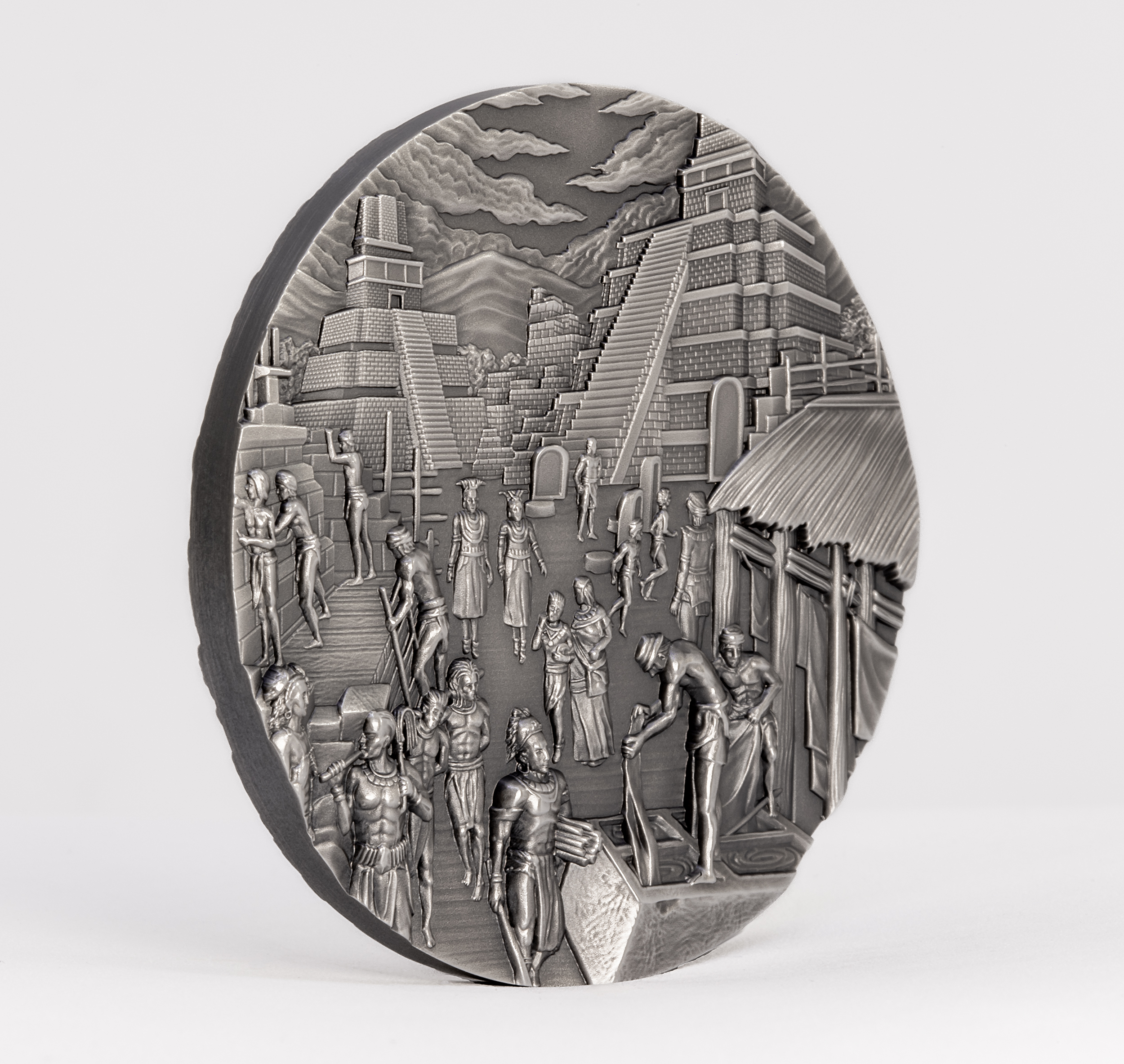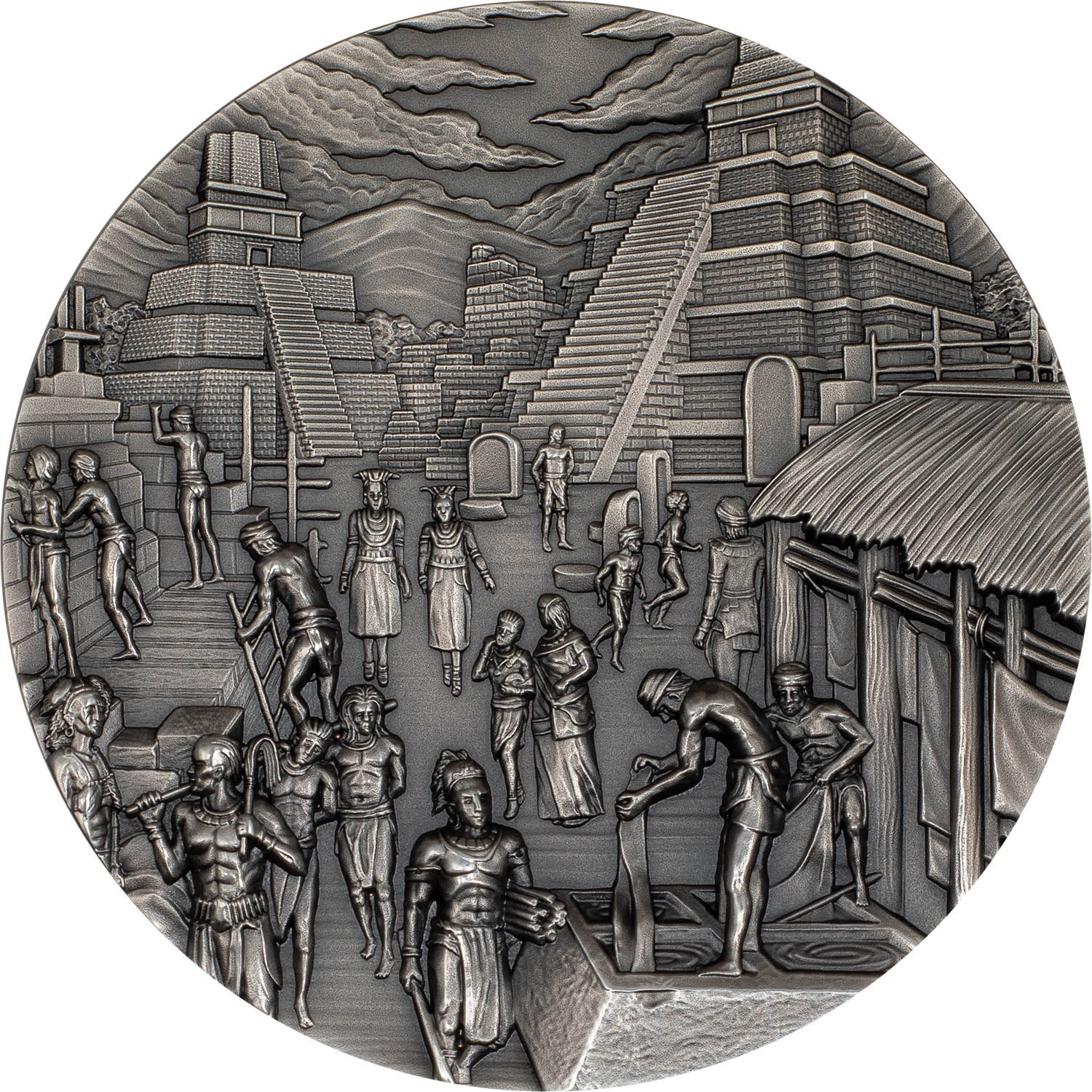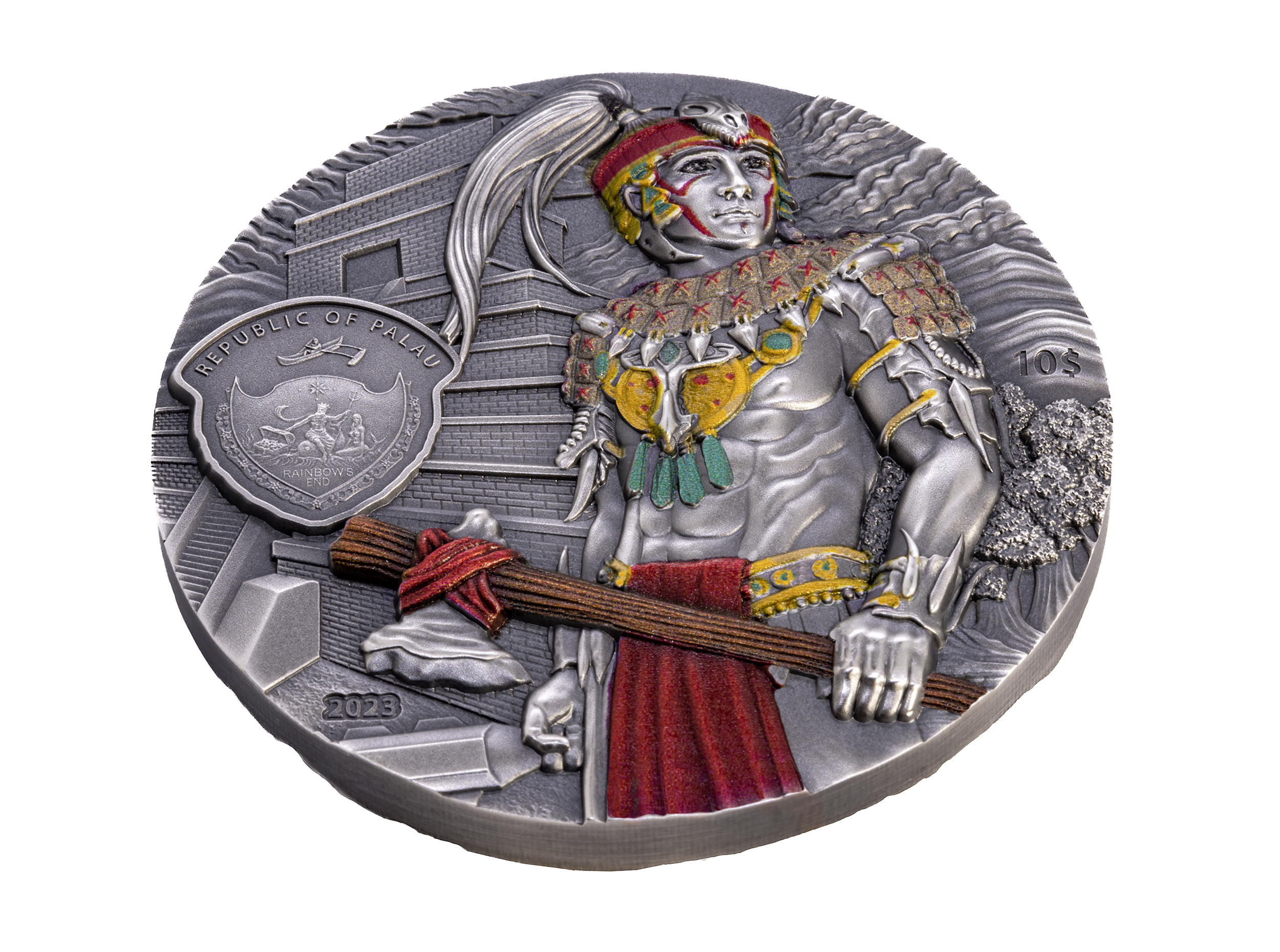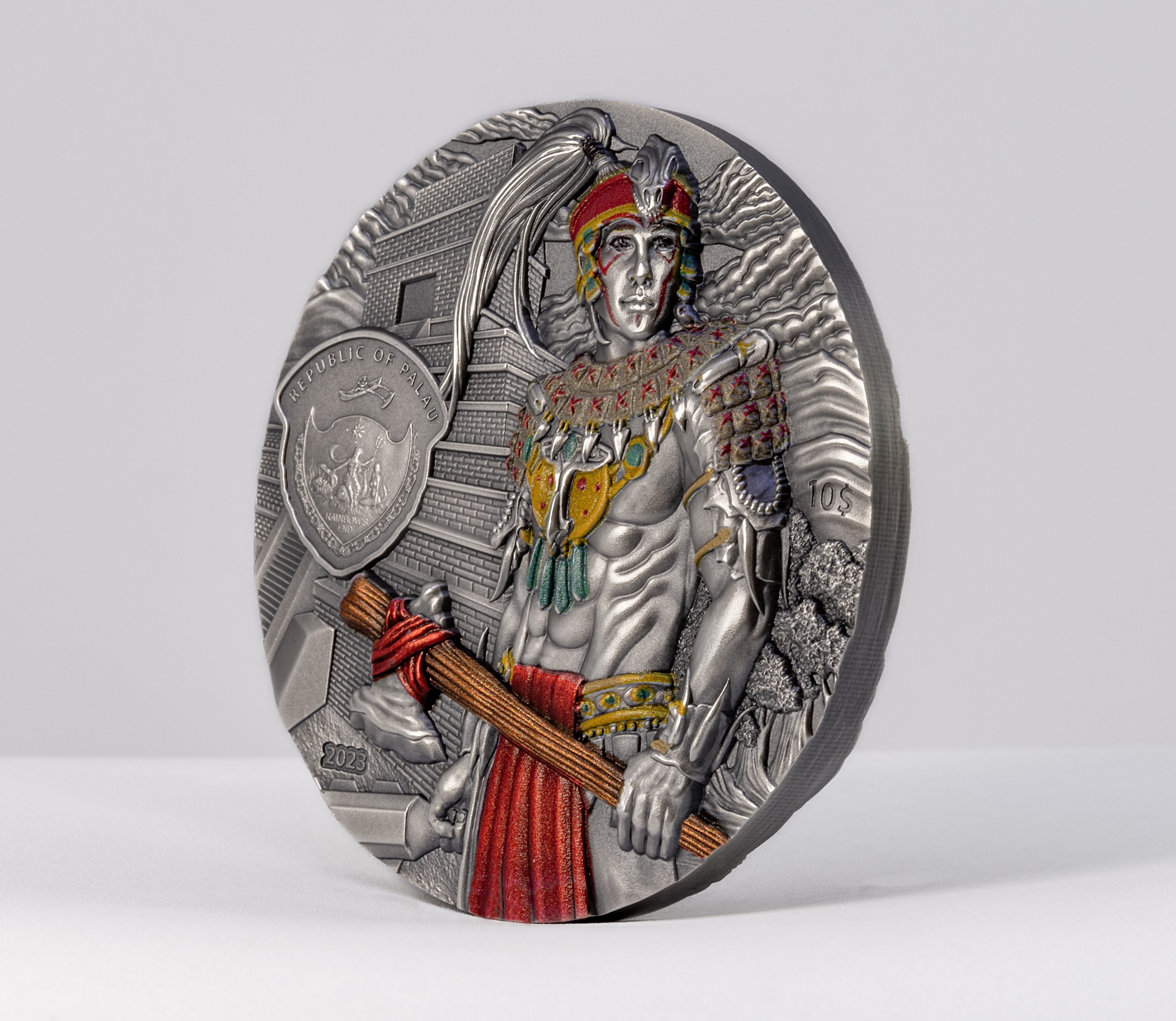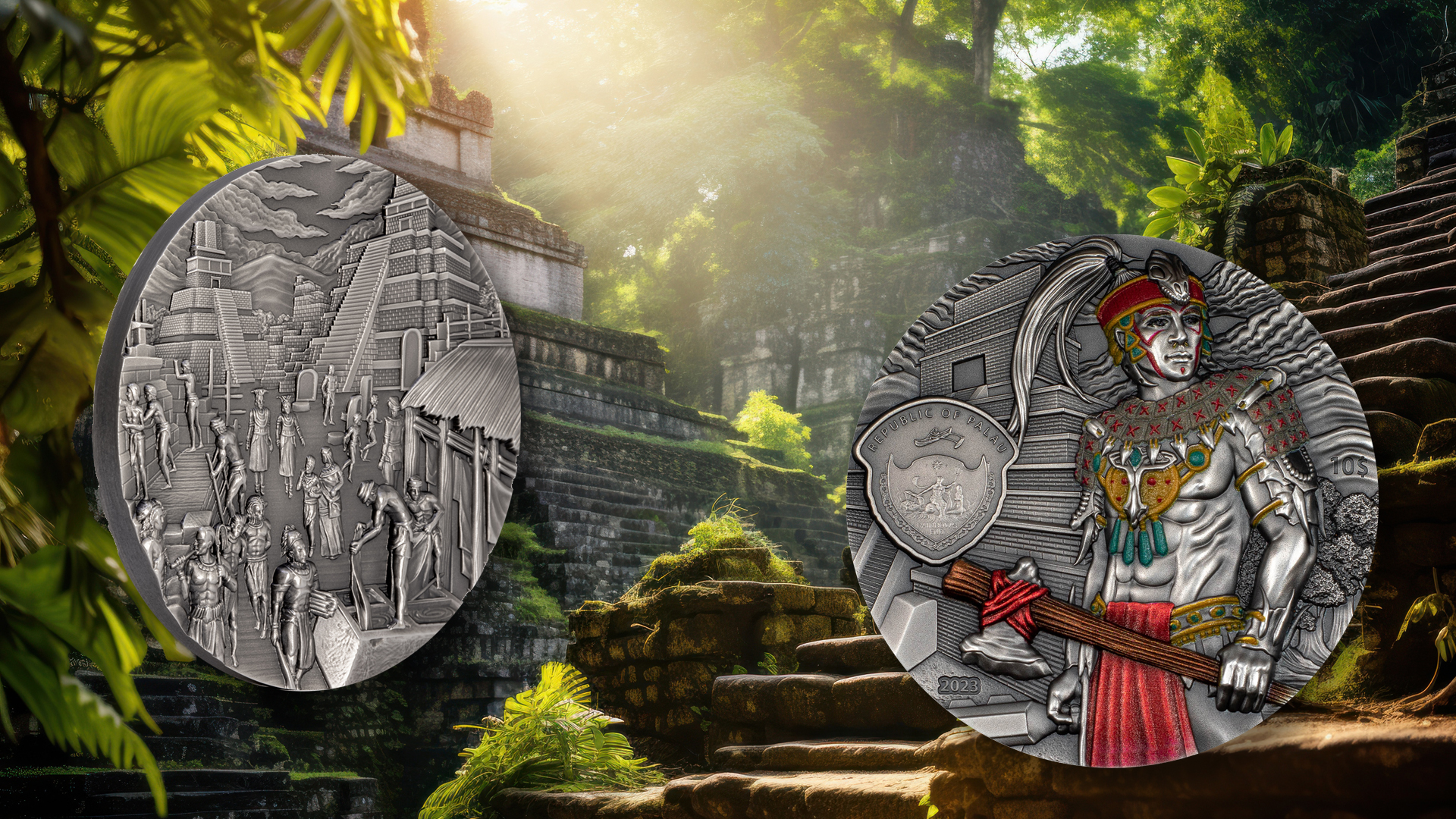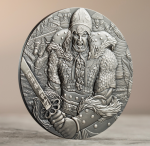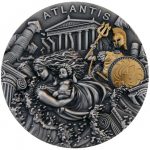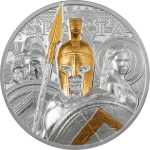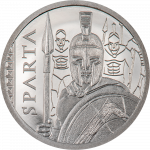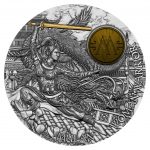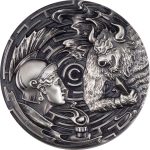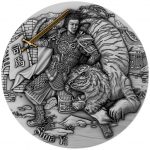Palau – 10 Dollars – 2023 – Mayans Tikal & Warrior / Lost Civilizations
€ 329.95
In Stock / On Backorder
| Issuing Country | Palau |
| Year of Issue | 2023 |
| Face Value | 10 Dollars |
| Metal | Silver |
| Fineness (purity) | 999/1000 |
| Weight | 2 oz |
| Diameter | 45 mm |
| Quality | Antique finish |
| Mintage | 555 pcs. |
| Scope of Delivery | Box Certificate |
| Special features | Smartminting, antique finish and colouring |
Description
The ‘Maya Civilization’ coin is the third release in the ‘Lost Civilization’ series. Even more detailed than its predecessors, it depicts the city of Tikal and a fierce Mayan warrior. The civilization comes back to life through the enhanced Smartminting©️ technology which is used on both sides of the coin. It features an antique finish and is struck on a 2 oz pure silver 45mm blank of the highest quality. With a limited mintage of only 555 pieces worldwide, it comes packaged in a beautiful box with a certificate of authenticity. This third edition is undoubtedly a great item for history lovers.
Coin description
The obverse of the coin depicts the main street of the Mayan city Tikal, with pyramid-shaped temples visible in the background. The daily life of the Mayan civilization is portrayed in the foreground, featuring activities such as building, leather processing, children, warriors, and others engaged in their daily routines.
On the reverse side of the coin, a fierce and strong Mayan warrior is depicted, with a temple in the background. To the left of the warrior is the Coat of Arms of Palau, accompanied by the inscriptions: “REPUBLIC OF PALAU” (the issuing country), “2023” (the year of issue), and “10$” (the face value).
Background information
The ancient Mayan civilization, flourishing in Mesoamerica from around 2000 BCE to 1500 CE, thrived in a vast region encompassing present-day Mexico, Guatemala, Belize, Honduras, and El Salvador. Renowned for advanced achievements in mathematics, astronomy, architecture, and hieroglyphic writing, the Mayans built impressive city-states like Tikal and Copán. Their intricate calendars and religious practices, featuring elaborate ceremonies and pyramid-temples, reflected a sophisticated society with a deep connection to celestial events. The Mayans mysteriously declined by the 10th century, leaving behind a rich cultural legacy and archaeological wonders that continue to captivate historians and researchers.
Mayan warriors played a crucial role in the civilization’s defence and expansion. Typically armed with atlatls, obsidian-edged weapons, and sometimes elaborate jade-decorated war gear, they defended city-states and engaged in ritualized warfare. Mayan warfare was multifaceted, involving conflicts over resources, trade routes, and dynastic disputes. Warriors often displayed martial prowess through ritual bloodletting and trophy-taking, symbolizing bravery. Strategies included ambushes and siege tactics, with elite warriors at the forefront. Despite their military might, the Mayan civilization’s decline remains a complex mystery, intertwined with environmental factors, societal shifts, and the changing dynamics of Mesoamerican politics.

